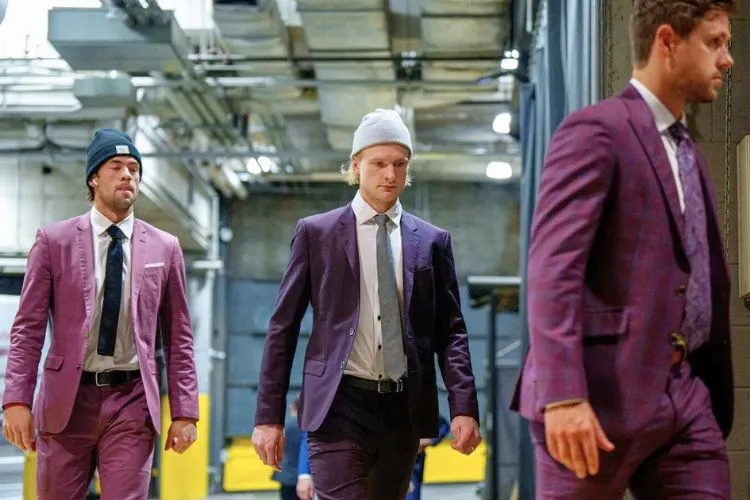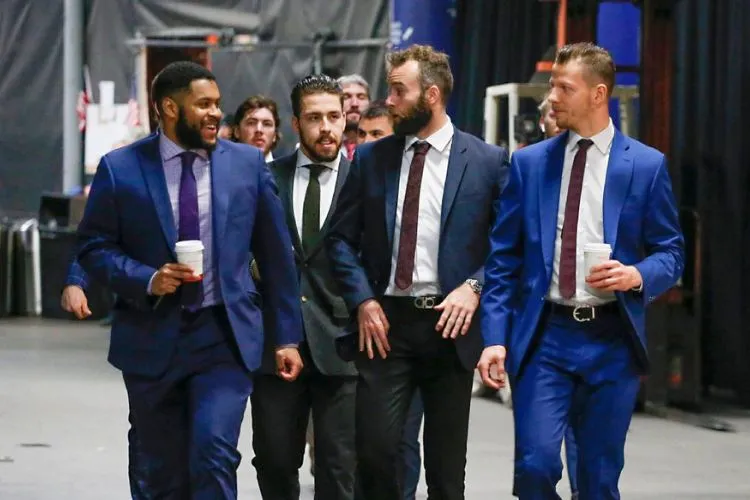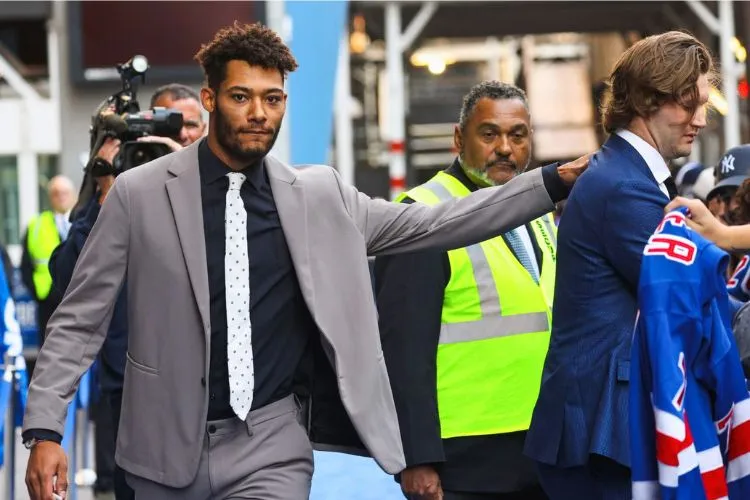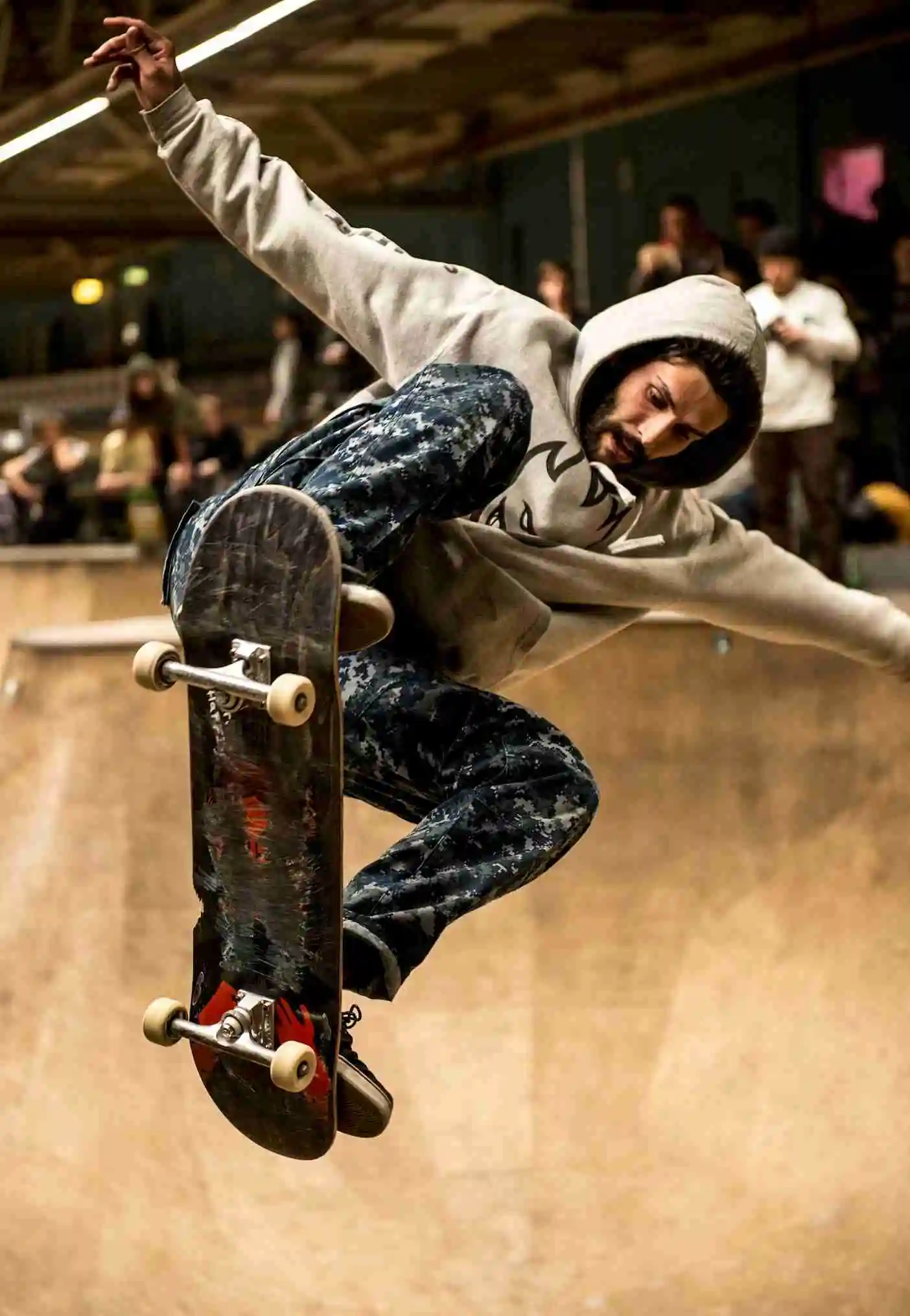In the world of professional sports, each has its unique traditions that shape its identity and culture. One such tradition in hockey is the norm for players to wear business suits to games.
Unlike many sports where athletes arrive in casual or team-themed attire, hockey players stand out with their formal dress code. This tradition not only sets the sport apart but carries significant meaning and history within its community.
This article aims to explore the reasons behind why do hockey players wear suits and how it impacts the players and the sport of hockey itself.

Historical Context
The tradition of hockey players wearing suits dates back to the early days of the sport. In the past, it was common for businessmen to wear suits daily and hockey players were not exempt from this societal expectation.
Initially, players would wear suits to games because it was typical attire for traveling and public appearances. Over time, this became an ingrained part of the sport’s culture.
It helped that the early icons of the game set a precedent, maintaining this practice which underscored the professionalism of the sport as it grew in popularity.
Why Do Hockey Players Wear Suits?
Professionalism and Team Unity
Wearing suits conveys a strong sense of professionalism. For hockey players, it signifies the seriousness and the respect they hold for the game and its stakeholders including fans, officials, and opponents.
Additionally, when a team presents itself in uniform fashion with all members dressed similarly, it enhances a sense of unity and solidarity among the players.
This collective presentation can foster team spirit and a strong sense of belonging and pride among the team members.
Respect for the Game
The tradition of wearing suits also acts as a sign of respect for the sport. By dressing formally, players demonstrate a formal recognition of the rules and the heritage of the game.
This respect extends beyond the players and touches on the entirety of the professional hockey community including coaches, team staff, and fans, reinforcing the dignity of the event.
Psychological Impact
Dressing well is often associated with feeling good. For hockey players, donning a suit before a game can instigate a mental shift, preparing them mentally for the contest ahead.
This psychological boost is crucial in sports where focus and confidence play a big part in performance. The formal attire sets the tone for performance and can enhance a player’s game-day mindset.
League and Team Policies
Many hockey leagues have dress codes that stipulate players must wear business attire to all official functions, including games.
These policies are set by the leagues and individual teams to ensure consistency with the tradition of professionalism in the sport. Compliance is generally high, contributing to the universal adoption of this tradition across the sport.
The Modern Take on the Tradition
While the tradition of wearing suits remains strong, modern influences have seen a shift in how strictly players adhere to this dress code.

Today, players and teams often express individual styles within the scope of formality, influenced by personal preference and popular culture.
Social media platforms provide athletes with a stage to showcase their fashion sense, thereby personalizing what might otherwise be a rigid tradition.
You may also read: What is PIM in Hockey? Simple Guide
Cultural Significance
In hockey, the tradition of wearing suits extends beyond simple appearance norms—it is a vital part of the sport’s culture and contributes to its unique identity.
This tradition differentiates hockey from other sports where athletes might dress more casually. It embeds a sense of history and respect for the generations of players who have donned suits before hitting the ice.
Challenges and Criticisms
Despite its strong roots, the suit-wearing tradition in hockey is not without its critics. Some argue that it is an outdated practice, unsuitable for the dynamic and physically demanding nature of the sport.

Others point out the financial burden it can place on younger players who may not have the resources to invest in high-quality suits.
The Future of the Topic
While the future of this tradition is uncertain, it is clear that it will continue to evolve. Younger players and changing cultural norms may influence how the tradition adapt moving forward.
Whether it becomes more flexible or remains rigid could largely depend on the values and priorities of future generations of players.
Pro Tips for Players
For players adapting to this tradition, selecting a suit should focus on fit and comfort to ensure ease during travel and pre-game activities.
Maintaining a wardrobe of high-quality suits that are both stylish and functional is crucial to adhering to league standards while also accommodating personal comfort.
Frequently Asked Questions (FAQs)
Why don’t all sports have a similar dress code to hockey?
Each sport has its own culture and traditions. The suit tradition in hockey evolved uniquely within its historical context, differentiating it from other sports.
Has any player ever been penalized for not following the dress code?
Yes, there have been instances where players faced fines or were otherwise penalized by their teams for not adhering to the dress code regulations.
Do players wear suits to all types of games, including away games?
Yes, players typically wear suits to both home and away games, maintaining a consistent professional appearance regardless of the location.
How do rookie players adapt to this tradition?
Rookies adapt by observing their teammates and often receive guidance from veterans on how to uphold the team’s and league’s dress code standards.
Are there exceptions to the rule for wearing suits?
Some teams and leagues allow for variations or relaxed dress codes during certain circumstances, like long travel days, but generally, the expectation is to follow the tradition.
Conclusion
The tradition of hockey players wearing suits is a poignant example of how attire can influence the perception and culture of a sport.
While rooted in history and respect, it continues to adapt to the modern era, balancing tradition with contemporary influences.
Whether this practice will sustain in the years to come remains to be seen, but its impact on the sport’s identity is indisputable.
As the sport continues to evolve, so too will the traditions that define it, shaping the future of how players prepare for the game both on and off the ice.

Matthew James is a passionate skater who wanted to create a platform to share his love for skating with others. With a vision to create a vibrant community of skaters, he aims to provide a space where skaters of all levels can connect, learn, and grow together.
